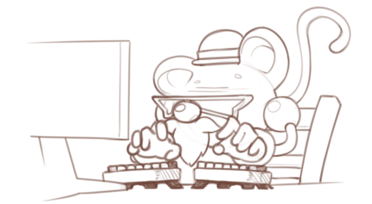I use Rust mostly because I am comfortable working with it. It hits a sweet spot of often letting me write in a functional style, at often zero or very low cost. It has a lot of high quality libraries, for almost any purpose. And the language itself comes with great things too. Traits, Option, and Result are all things I miss when working in other languages like Go.
It’s also a memory safe language that is also fast, approachable, and has a ton of good documentation. What’s not to like?





Yes, you’ll need to move the number layer, to have a higher index than the QWERTY layer. In QMK, layers are index-ordered (see the docs here), no matter the order you activate them. If you activate layer 9 (qwerty) and layer 4 (numpad), then even if you activated layer 4 later, it will still be below layer 9. So any key that is not transparent on 9, will be looked up from 9. Only transparent keys will be looked up from layers below.